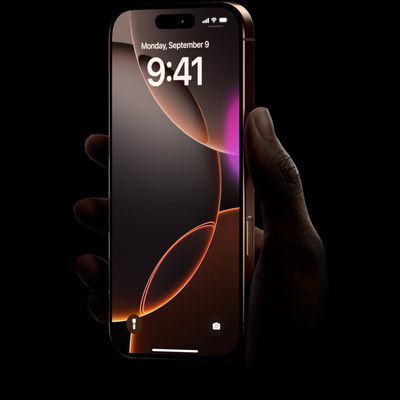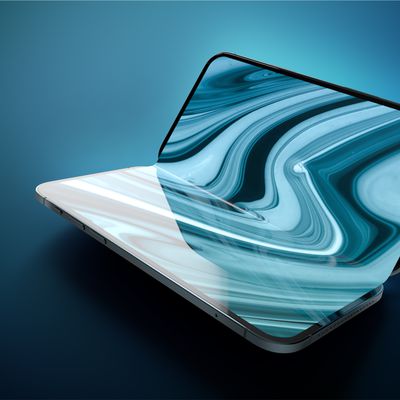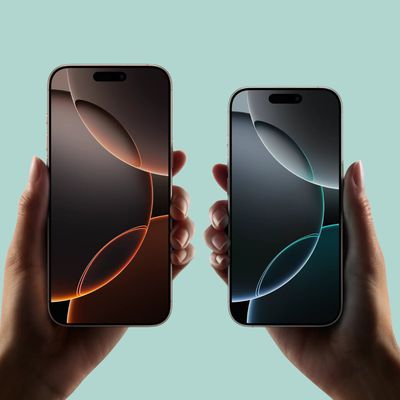Apple Says Minor Screen Burn-In and Shifts in Color When Looking at iPhone X Off-Angle Are Normal
Apple this morning shared a new support document explaining how OLED displays work and that it is normal to see some screen burn-in over time and shifts in color when looking at the iPhone display from an off-angle.
According to Apple, when you look at an OLED display from a side angle, you may see shifts in color and hue, something that's a "characteristic of OLED" and "normal behavior."

Apple says that with extended long-term use, OLED displays can show "slight visual changes," which is also considered normal. The iPhone X has been engineered to be the "best in industry" at reducing burn-in effects, but Apple's support document suggests burn-in is still a problem that some users could potentially see over time.
This is also expected behavior and can include "image persistence" or "burn-in," where the display shows a faint remnant of an image even after a new image appears on the screen. This can occur in more extreme cases such as when the same high contrast image is continuously displayed for prolonged periods of time. We've engineered the Super Retina display to be the best in the industry in reducing the effects of OLED "burn-in."
With Apple referring to burn-in as normal behavior, it's not clear how this issue will be treated should it occur in terms of the one-year iPhone X warranty or extended AppleCare+ coverage. Typically, issues that Apple considers normal are not covered.
Apple's wording suggests screen burn-in is going to be a rare occurrence, but Apple does suggest users avoid displaying static images at maximum brightness for long periods of time. If there's an app that keeps the display on when the iPhone X is not in active use, the brightness level should be temporarily reduced using Control Center.
Making sure the iPhone X's display is set to go to sleep after a short period of time will also help prevent any burn-in issues, as it generally happens when the same image is on the display for a long time. Apple recommends setting Auto Lock to "a shorter time."
Popular Stories
Apple will launch its new iPhone 17 series in two months, and the iPhone 17 Pro models are expected to get a new design for the rear casing and the camera area. But more significant changes to the lineup are not expected until next year, when the iPhone 18 models arrive.
If you're thinking of trading in your iPhone for this year's latest, consider the following features rumored to be coming...
In select U.S. states, residents can add their driver's license or state ID to the Wallet app on the iPhone and Apple Watch, providing a convenient and contactless way to display proof of identity or age at select airports and businesses, and in select apps.
Unfortunately, this feature continues to roll out very slowly since it was announced in 2021, with only nine U.S. states, Puerto Rico,...
Apple does not plan to refresh any Macs with updated M5 chips in 2025, according to Bloomberg's Mark Gurman. Updated MacBook Air and MacBook Pro models are now planned for the first half of 2026.
Gurman previously said that Apple would debut the M5 MacBook Pro models in late 2025, but his newest report suggests that Apple is "considering" pushing them back to 2026. Apple is now said to be...
Three out of four iPhone 17 models will feature more RAM than the equivalent iPhone 16 models, according to a new leak that aligns with previous rumors.
The all-new iPhone 17 Air, the iPhone 17 Pro, and the iPhone 17 Pro Max will each be equipped with 12GB of RAM, according to Fixed Focus Digital, an account with more than two million followers on Chinese social media platform Weibo. The...
Since the iPhone X in 2017, all of Apple's highest-end iPhone models have featured either stainless steel or titanium frames, but it has now been rumored that this design decision will be coming to an end with the iPhone 17 Pro models later this year.
In a post on Chinese social media platform Weibo today, the account Instant Digital said that the iPhone 17 Pro models will have an aluminum...
Production of foldable OLED displays for Apple's first foldable iPhone have begun ahead of its expected launch next year, Korea's ETNews reports.
The first foldable iPhone's displays are being produced by Samsung Display, who are establishing a production line dedicated to the upcoming Apple device its A3 factory in Asan, Chungcheongnam-do. The production line will make displays exclusively...
A new Apple TV is expected to be released later this year, and a handful of new features and changes have been rumored for the device.
Below, we recap what to expect from the next Apple TV, according to rumors.
Rumors
Faster Wi-Fi Support
The next Apple TV will be equipped with Apple's own combined Wi-Fi and Bluetooth chip, according to Bloomberg's Mark Gurman. He said the chip supports ...
iPhone 17 Pro and iPhone 17 Pro Max models with displays made by BOE will be sold exclusively in China, according to a new report.
Last week, it emerged that Chinese display manufacturer BOE was aggressively ramping up its OLED production capacity for future iPhone models as part of a plan to recapture a major role in Apple's supply chain.
Now, tech news aggregator Jukan Choi reports...



















